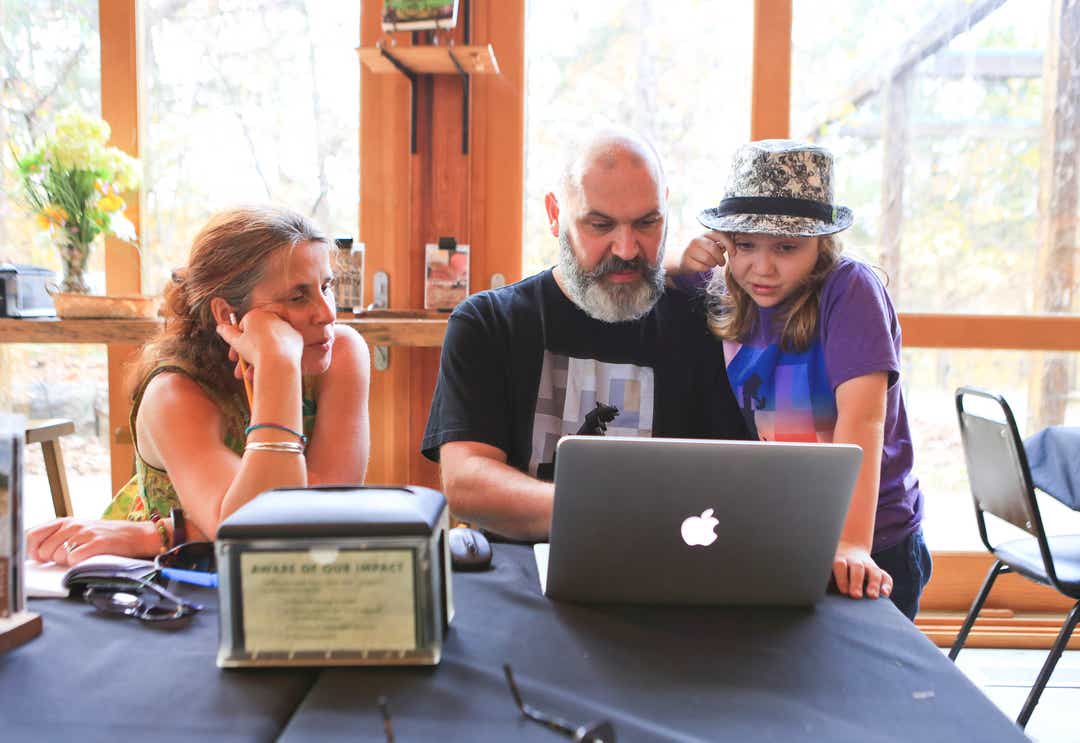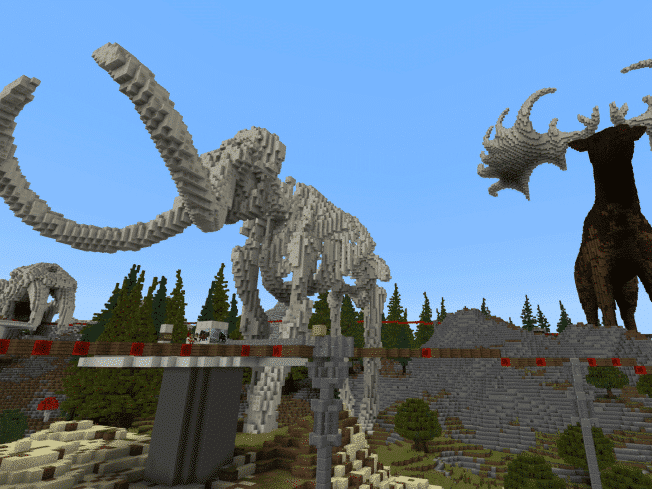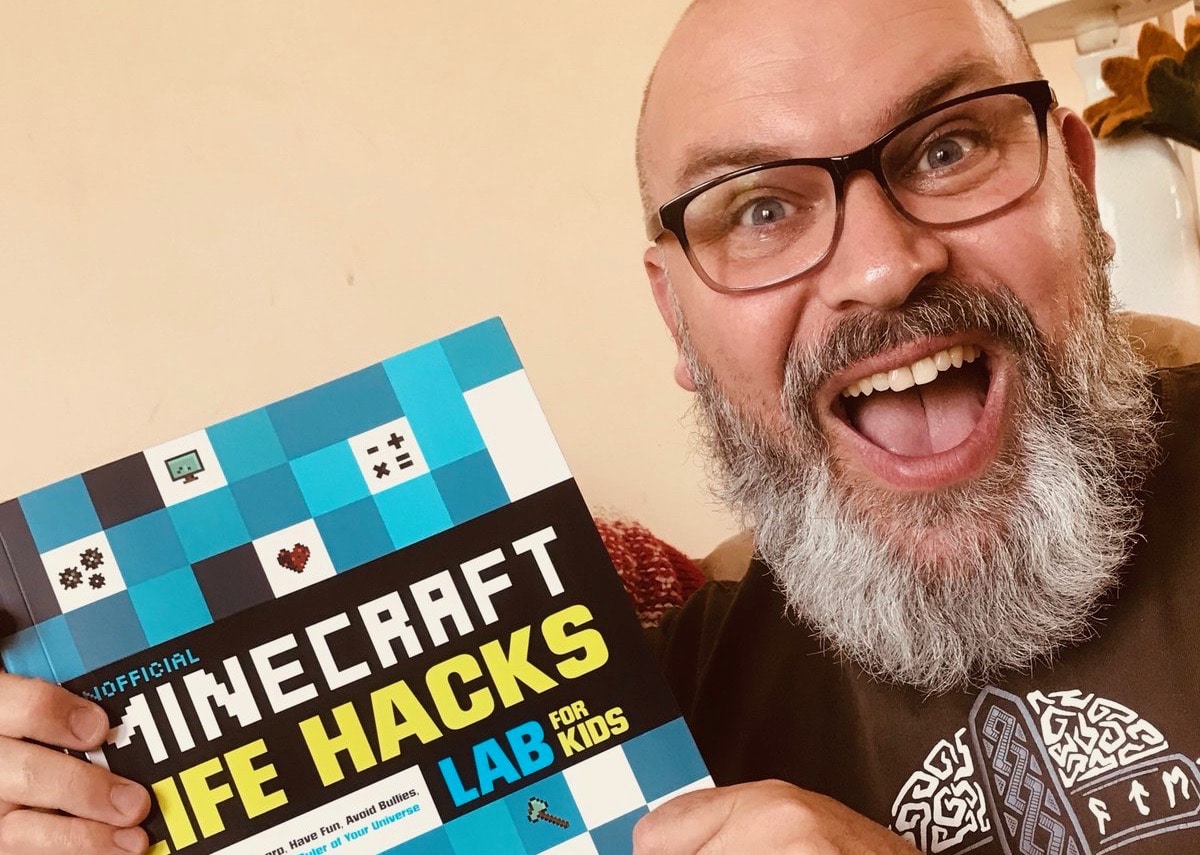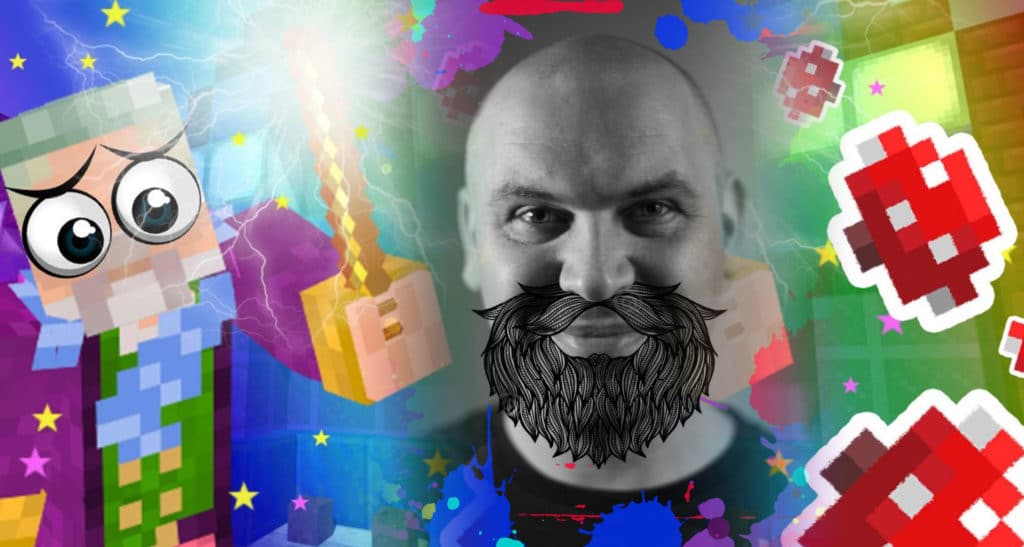
Think adults don’t play Minecraft? Think again. Games help solve society’s challenges.
Minecraft is a lot more than the biggest video game in the world, with a community of nearly half a billion players. Set inside a map made up of virtual blocks, it’s a game of possibilities that has become a global pop phenomenon, an educational tool for social change and the perfect lockdown game to get everyone ‘outside’ – building imaginative worlds inside an immersive environment.
As widely recognised on the streets of Hanoi as in Houston, the ‘Lego of a new generation’ can engage citizens and teach us digital literacy. It is all about expressing yourself and the journey is more important than the destination itself, precisely because there is no end goal. Players create their individual adventure, by building it, and then share their fantasy world with others.

People all around the world are redesigning their towns using Minecraft
Leading Minecraft artist, British visual storyteller Adam Clarke (aka Wizard Keen) has produced some of the world’s most innovative Minecraft maps. Whether collaborating on Disney’s educational series Wonder Quest (with YouTube’s most famous cat, Stampy, who’s “bigger than Justin Bieber”) or working with the UN and World Wildlife Fund, the nature-loving digital noodler proves how video games can build brain cells. There’s a reason why his projects have seen the most amount of people ever engaged in the art collections of Tate Britain.
Don’t be scared about understanding the world of gaming. Read Adam’s FutureFixer interview and our glossary, join the community and start crafting today. DO attempt this at home…

The wonderful wiz on digital relationships, the inclusivity of remote learning and why he needs to clone himself

Wizard Keen, illustrated by Steve Gregson
Lots of people need the power of virtual worlds that kids can engage with. This is what technology is good at: connecting us to one another in virtual worlds that can be shared to massive online niche audiences is thrilling and creative and wonderful – and that’s where I find myself.
Online play is important. Minecraft gives us the opportunity to model the world around us. It offers us way to connect with each other and learn how to build together from our local communities for global problems.
The advent of more remote ways to learn and entertain ourselves has emerged. The pandemic has taught us that travel was the mode of the virus’ spread. That’s going to change how we see the world in the future. Minecraft is just one way to do it.
VR headsets sold out around the world during this pandemic. People want to travel, but now they can travel from their homes and communities – and share the creative fruits of their travels locally. I saw a folk festival yesterday from the artists’ living rooms. It’s very post-punk rock.
It’s nice to be a wizard. There aren’t many people around the world doing what I do.

The Wizard in the outrageously successful Minecraft
Minecraft is a video game inside a map made up of blocks. You often start playing with no materials, almost washed up on a beach, and the first thing you have to do is punch a tree to make wood – ‘mining’ down the environment and then ‘crafting’ from the materials you find. Hence the name ‘Minecraft’.
I’m in my 40s and I play Minecraft every day. Minecraft is great for children, because it’s completely unintimidating, but it is also great for adults. People often say “but aren’t kids playing too many video games?” A book for me is a piece of technology. It’s just transferable data. Before books we used to invent songs or tell stories. Those skills now inhabit tablets.
Video games can be inclusive and open spaces to share ideas and tell good stories. Most people can use a tablet. Through a game, children and young people can be engaged in political questions and empowered in making informed choices.

As in real life, in Minecraft everything is connected and starts with bees
I started playing computer games when I was 11. My maths teacher showed me the BBC microprocessor and we played a maths game, landing a spaceship. I thought that was the best thing ever. I begged my mum and dad to buy me a computer and they bought me a cheaper version, an Acorn Electron. I played video games constantly and never stopped.
My parents told me I would need to get a real job one day and to “get off that computer!” Now I am a self-employed artist working in video games and have never been busier.

Tall oaks from little acorns grow
Wonder Quest was born because I introduced my son to Minecraft when he was three. We loved watching Stampylongnose YouTube videos, so when I read him his favourite bedtime story, ‘The Tiger who came to Tea’, I changed it to ‘When Stampy Came to Tea’. He thought it was hilarious, so I reached out to Stampy to ask if he might voice the Tiger. Serendipity stepped in. He was searching for someone to collaborate on educational content for his new show, Wonder Quest. It was the beginning of something really special.
Minecraft is a sandbox game. A ‘sandbox‘ is a playful approach to solving problems. It fits neatly into the maker movement. You can rapidly prototype an object or design, but it also has a much wider scope. You could create a system of taxation within Minecraft and present players with choices about how they wish to spend that tax – would they invest in healthcare, the elderly, education, buildings and roads – and how would their choices influence the development and shape of their world?
Minecraft doesn’t encourage a gun fetish. Another really positive aspect is the lack of focus on violence. This is the most benign, cartoony violence there is. It’s more interesting in terms of the skills involved. The only weapons are a sword and a bow and arrow. (But you can forge weapons or you can punch something.)
I had a major problem with online world Second Life. Some people have said, “Why don’t you do your stuff in Second Life, or something more graphic?” But I like the super-creative, very low resolution aesthetic of Minecraft.
Minecraft has blocky, non-gender specific avatars. Whereas in Second Life, a lot of people were white and stereotypically ‘sexy’ – the characters are highly sexualised.
Minecraft is a fantastic way of exploring digital literacy. It gives us a ‘biome’ or environment and characters or ‘avatars’. You can reflect back on behaviour between these virtual worlds and how it affects other people.
I have a problem with the word ‘virtual’, because it’s not virtual, it’s totally real. If you spent ten hours creating a lovely clay vase and then your friend smashed it so it shattered into a million pieces, no one would question the fact that you would feel pretty awful as a consequence. The horror is exactly the same if you build something in Minecraft and someone blows it up with ‘TNT’. This is called ‘griefing‘ and can be a real problem, but we are evolving in terms of empathy.
You often find people with autism feel more at ease inside a Minecraft. Being able to communicate is easier and there’s a certain amount of distance with a computer and a screen. You can turn it off and move away if you feel overwhelmed, but this doesn’t make it any the less real in the investment of time, creativity or friendships.

Home schooling in 2020
Games and online worlds help us connect in creative ways. They give us the skills needed to communicate and play with people from around the world. I spoke to a parent today, she wanted her eight-year-old to learn how to communicate in an online world as her son was finding the home schooling difficult.
I used to run a home education server with a Facebook page with the parents. A new kid might destroy or steal something from others in Minecraft. ‘Mum and dad’ would erupt an argument on the wall – meanwhile, back on the server the kids have sorted it out, happily playing along. The game has given them a safe space to work out these social interactions.

‘That’s Why I Love Minecraft’ – the book for anyone who is yet to play
I was shortlisted for the Tate Museums IK Prize in 2014 for my proposal, TateCraft. It was my experiment to engage around art with a new audience of 7-11 year olds. I didn’t win, but the idea had a huge popular backing and Tate Museums were interested in developing the idea, so Tate Worlds was created.
In Tate Worlds, the map is a game that tells a story. So you might meet with André Derain and he tells you he is sent here by his agent to paint the scenes of London but has lost his pigments, the colours with which he paints his paintings. He asks you to help him go round London to find them so he can paint. You figure out what the ‘Pool’ and heart of London is, about the history, artist and artistic movement behind the painting, about commerce and architecture and politics and folklore. All this without being ‘told’ anything!

The first time Minecraft was used as a platform for exploring famous artworks
I can pinpoint the moment when I knew it was a success. I was sitting with my seven-year-old (at the time) and he told me “This painting is called the ‘The Pool of London’ and it was done by André Derain in 1906 and he was a Fauvist. They used really bright colours called pigments.” He had absorbed a knowledge of the technical language history of the Fauvist movement. We had designed the map to do just that.
The UN Habitat use the intergenerational aspect of Minecraft really well. Block by Block looks at community involvement. They were thinking about transforming dirt areas and used Minecraft to quickly try different buildings and solutions out, like a children’s playground or community building. Minecraft helps neighbourhood residents model their surroundings, visualise possibilities, express ideas, drive consensus and accelerate progress.

Young people plan neglected urban public spaces
Minecraft can also be used for very serious and life-changing ways of working things out. When my wife’s mother died of cancer, the experience of life and death merged into a collaborative project between us called My Mother’s House, which was the winner of a Literary Platform Writing Bursary for literature and technology. On a personal level, it helped us to talk about ‘Nana’s death’ with our son and gave us a poetic space to reflect about that as a family too.
My family was once an ‘artist in residence’ in a forest. I travelled with my wife, Victoria Bennett, and son, to stay in Bernheim Forest in Kentucky, USA, for six weeks as part of the annual Artist in Residence Scheme. As ‘The Common People’, we created some of the forest inside a Minecraft. My wife is a poet, I’m a visual artist and Django was a curious, creative, home-educated eight-year-old boy!

Django is now 12 and making Minecraft maps
The natural world is beautiful and fragile. It’s important to create reminders and sign posts to teach and demonstrate the importance of biodiversity. That’s why I created a map that engages young people to think about conservation for United for Wildlife called ‘We Are the Rangers’. Then I did another one for them about sea life and turtles.
You too can conduct research about climate change and work collaboratively to build creative solutions. We collaborated on an interactive curriculum called ‘Extinction! A Biodiversity Crisis’ with the WWF and creative minds of Naturebytes, a UK-based collective of technologists and conservation scientists. You can ride a rollercoaster through different eras. Climate Hope City is another positive climate change technology project (with The Guardian).

Learn about species past and present
I’m one of the oldest people in the Minecraft world. It’s a world of digital relationships on YouTube and Skype. It’s a world where interpersonal relationships do not really exist. It’s funny when we all meet in real life. Sometimes a bit awkward, but it’s nice. The average age is all under 30.
We like to stay in character. Often, with the people I know in Minecraft, we call each other by our avatar names not their real names. I know a Stampy, Squishy, Dragnoz, Squid and Squidoodley.
What next? I need to clone myself. I’ve got too many projects going on. I keep thinking “Oh, I mustn’t do this one,” but then think, “oh but that’s so good and will be so interesting!” I’ve been producing an interactive map of the Great Fire of London with The Museum of London, done a live play in Minecraft, a refugee project which we hope to take out into French schools and I am also working with Stampy on the next season of Wonder Quest.

Gameplay will guide you to make great choices
For a lot of people I am Wizard Keen. but I still want to push the envelope. As long as Minecraft allows me to do things that are fresh, it will remain a really interesting space to work in. China allows Minecraft to be played for free there. I feel it is just stepping into the mainstream, so it will be really interesting to see how they use it in schools.
My Future Power would be… time travel. Then I can meet the people who shaped our present and see how the future ends up.

Dragnoz, Wizard Keen and Atlas Editor, Lisa Goldapple

